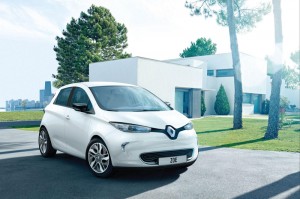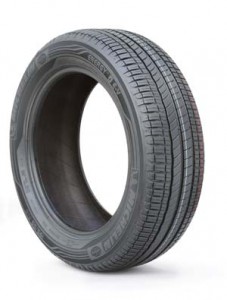
A new car featuring new technologies and new tyres – everything about the Renault ZOE is new, including its Michelin Energy E-V tyres. Developed through a four-year research and innovation program conducted jointly by Renault and Michelin, the new, highly energy-efficient tyres help increase the car’s overall driving range.
All Renault ZOE models equipped with 15 and 16-inch wheels will be fitted with the new Michelin Energy E-V tyres. These innovative products are in-line with the car manufacturer’s Range OptimiZEr approach for the Renault ZOE, which integrates an array of innovations designed to improve the vehicle’s range in all driving conditions. In near-urban use, for example, the Michelin Energy E-V tyres increase the ZOE’s range by up to 6%, depending on the type of use.

Michelin’s goal is to design tyres that help to reduce energy consumption while maintaining the same high performance in the areas of safety – especially wet grip – and longevity. Michelin is deeply committed to simultaneously improving tyre performance and quality in different areas. This constant focus on balanced performance was one of the main reasons behind Renault’s decision to forge the development partnership.
Based on more than 20 years of research to develop solutions that save energy and reduce carbon emissions, the Michelin Energy E-V integrates Michelin’s most advanced technologies and applies them to deliver cleaner, safer electric vehicle mobility, which is exactly what the Renault ZOE offers.
What role does the tyre play in optimising EV range?
The tyre plays a key role in vehicle energy consumption. Tyres account for up to 30% of the energy consumed by an electric powertrain. With each rotation of the wheel, a tyre is deformed when it comes into contact with the road. As its structure is deformed, the components heat up and some of the energy transmitted by the engine is lost. Reducing this heat build-up also reduces energy consumption, but the technologies developed by Michelin go much further. While the Michelin Energy E-V tyre doesn’t heat up much when driving, thus reducing energy consumption, the rubber in the contact patch heats up quickly when the brakes are applied, thereby shortening braking distances.
